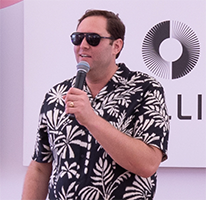Marketing partnerships have become an important marketing strategy for brands and businesses to drive revenue, expand their customer bases and meet and exceed future growth goals.

Some 77 percent of companies see partnership development as central to their 2019 marketing strategy. Companies with mature partnership programs grow company revenue nearly twice as fast as other companies and are five times more likely to exceed stock price and bottom-line profitability, according to a new study commissioned Impact and conducted by Forrester.
Partnerships include everything from strategic partners, B2B partners, affiliates, influencers, app-to-app integrations and others.
Take Citibank. This month—once again—and into August, Citi throws a massive party that flows across the borough of Manhattan. Partners include New York City Parks, Chess at Three, Simon & Schuster, as well as many others. There’s Jazz concerts, a bubble garden and art farms among the variety of activities and brand activations. And, this is the 24th year for Citi’s annual Citi Concert Series in partnership with NBC’s The Today Show.
“We feel very strongly that brand partnership and alignment and sharing space is the new norm,” Monique Townes, svp, experiential marketing at Citi US Retail Banking, said earlier this year. “Marketing has to move quickly. A lot of regional banks are doing it—sharing their footprint with brands—and we are also going down that road. Citi’s partnerships have forged stronger brand values and stronger brands for both parties by capitalizing on both brand’s strengths.”
The study also found:
• High maturity partnership programs contribute 28 percent of overall company revenues, while low maturity programs contribute only 18 percent. This increase represents an average of $162 million worth of incremental revenue for companies with high maturity programs.
Other articles you might enjoy:
- Tips from a Partnership Marketing Guru
- L’Oréal Masters the Codes to Fend of Digital Disruptors
- 10 Disruptive Marketing Trends All Marketers Should Consider
Companies with the most mature programs treat partnerships as a strategic differentiator. For example, mature companies are 4x more likely to strongly agree that partnerships are instrumental to their competitive advantage, compared to companies with low partnership program maturity. And their investments pay off in business outcomes. Firms with the most mature programs are driving 2x faster revenue growth than companies with less mature programs, and are up to 5x more likely to exceed expectations on a variety of business metrics.
• Partnerships contribute a high and growing share of overall revenue. Over half of the companies surveyed (52 percent) get more than 20 percent of their revenue from the partnership channel. On average, partners contribute 23 percent of overall company revenue. With an average partnership revenue growth rate of 17.5 percent, and with 77 percent of companies prioritizing partnership development as a key 2019 initiative, the importance of partnerships will only continue to rise.
• 49 percent of respondents have seen a boost in revenue and 45 percent have seen a boost in brand awareness from their partnership program initiatives in the past year.
• Respondents consider key pillars in their multifaceted strategies for program success, including implementing technology to optimize partnership program execution and measurement. Other considerations include growing partner revenue (both in share of revenue and dollars per partner), optimizing performance metrics, and pursuing more innovative types of partnerships.
• Partnership programs provide a boost on both ends of the customer spectrum: acquisition and retention.
Carnival Cruise Line is well-versed in partnership marketing. The company’s VP of partnerships Scott Becher prefers to engage with partners that would like to reach his guests as much as he’d like to reach theirs—in other words, no dollars are exchanged.
Over the years he has inked numerous deals and tracks ROI through two key metrics—brand sentiment, and the more challenging impact on sales and bookings. Still, he overcomes that challenge by using sweepstakes and other promotions to encourage consumers to join the brand’s loyalty program. From there, he can track cruise bookings and other data tied directly to sales. “It’s important to figure out how to connect the dollars,” he says. “We have the ability to do that and that’s powerful.”
Carnival fits the role of a high maturity partnership marketer. The most mature programs have an assigned group of people dedicated to the program that collaborate with other departments; use process to optimize the program across each partner’s lifecycle; implement technology to manage and/or automate portions of the lifecycle; and have an expanded ecosystem of various partnership types currently contracted.
The Forrester study—conducted online in March—surveyed decision makers and practitioners of partnership marketing at 454 companies around the globe. It found the following characteristics of high maturity companies:
• Treat partnerships as a competitive differentiator.
• Focus their efforts on scaling and growth.
• Embed partnerships into their product strategy.
 Network
Network

